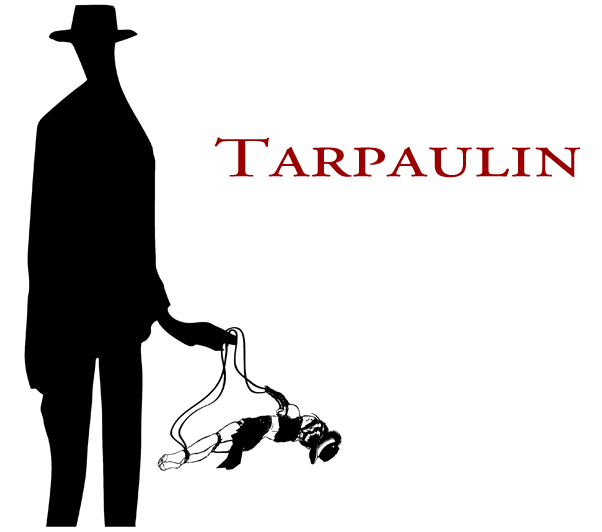 Key Bridge
Key BridgeKen Rumble
Carolina Wren Press, 2007
ISBN: 9780932112545
$14.95
Reviewed by Joseph Harrington
One of the pleasures of Ken Rumble’s Key Bridge is the variety of writing styles and poetic forms under the same cover. He can write gorgeous poems whose content is more or less representational:
the herons fly solo low back up
the river inland into land into
the pools, rivers, lakes the glaciers left –
the herons’ long sweep & lope with Zed necks up
the river – pull up in trees –
huddle under wings at the edge
of Roosevelt Island where
roots break the bank, turn in
to the water
But a similar topic can also prompt a more material play of light upon words:
shadow squirrel shadow runs
shadow life in your shadow pants
shadow arms play shadow games
shadow names give shadows aim
water’s shadow like shadow’s shadow
shadow day like shadow gaze
He includes cut-ups and syntax-scrambles, memoiristic free-verse, and even little imagist poems: “the blossoms/ fall it/ feels as if/ walking/ underwater petals.”
But what really attracted me to the book in the first place was that it was a book-length poem about Washington, D.C., because I’m interested in book-length poems and in Washington, D.C.
I was disappointed at first, because Key Bridge refused to give me either. There were some reminiscences of slumming as a teenager, nostalgia over Fugazi concerts, and some bragging about fucking in parking lots. A liberal white suburbanite reflected on his privileges, vis-à-vis the African-American community just over the D.C. line. Fair enough. But is any of that really Washington?, I wondered. Like other poets who have written about the capital, this one seemed to reduce it to maps, buildings, and traffic.
But after reading the book again, I realized that this is precisely the point. “[T]he view that metaphor can make anything anything” is the problem with historical or “social” poems. There is always the danger – maybe unavoidable – of a poem’s aestheticizing whatever it touches. Key Bridge is not The Bridge; it won’t stand unproblematically as the Great Symbol. Key Bridge is a specific place; it’s the bridge from the Northwest – the wealthier, whiter part of town – into “Chocolate City.” It’s the bridge Rumble crossed as a kid to get from Chevy Chase, Maryland to the thrift shops in Anacostia or the clubs downtown.
But this specificity, paradoxically, is the very thing that suggests all the metaphorical resonances of this bridge. Rather than fall prey to that, Rumble plays with that: “the bridge bridged the bridgeable river,/ bridgely bridging the bridged river/ . . . Bridge be./ Bridge be bridging.” It’s a real bridge that refuses to be a metaphor, even though it can’t help it. Metaphor “falls short” – doesn’t “carry over” – because trope can’t bridge event and account. “The city/ waiting/ for content” is waiting for satisfaction, but also waiting to take on substance. It’s like a guidebook to Washington written by Robbe-Grillet. D.C. is “the center”; there’s an important city of some sort, but there’s no there there – and Rumble knows it, even if the talking heads don’t. “To look at a landscape without describing it”– he wants to describe it, but he doesn’t really believe in description. In that sense, the book reminds me of Cecil Giscombe’s writing about British Columbia.
Rumble’s language is rather looser, more relaxed, more playful than Giscombe’s lyrically dense long poems. This bridge is not supposed to be Crane’s – as dense or as wrought – because the book is a diary; the poems have dates instead of titles, and the “entries” often have the offhanded, informal quality of a journal. Indeed, some of the best ones read like epigrams: “An other, an out there, away.” “There’s more evidence than words/ (worlds.” Or this little note-to-self: “write what’s gone” – then leave blank space.
I was grateful that a book covering May 2000 – October 2002 forbears to even mention 9/11. Moreover, I have to admire the way that many of the “entries” deal with events that happened years before the dates in question; the interpolation of later entries (from 2003) into the linear chronology of the text; and the restraint that can end the book at the time of the DC sniper killings – most of which happened in Rumble’s own suburban Maryland – without doing it to death. So to speak. (The mask of metaphor just won’t come off, revealing race.)
Race, class, “current events,” and history are always present in Key Bridge, just offstage – which, in fact, is often how they function for upper-middle-class white people, for whom “the police are an island/ you can choose not to visit.” History seems like a half-forgotten national park. There are “Civil War earthworks” – but you’re not sure, because they’re remembered from childhood – or they’re in a “bad neighborhood” the speaker won’t stick around in. Rumble is not afraid to report what white people say to each other:
Northeast: oh, it’s sketchy
Anacostia: that place is scary
Southeast: you don’t want to be there at night
Capitol Hill: it’s dangerous
Capitol Heights: Section 8
Mount Pleasant: in a few years this neighborhood will be great
This racialized real estate is always there, precisely because it’s not talked about.
If not all these poems refer to home rule, urban renewal, or the early republic, it is because these were only some of the things that went through the poet’s consciousness in the first years of the century. And that’s a good thing, for both him and us.
***
Joseph Harrington is the author of Poetry and the Public: The Social Form of Modern US Poetics (Wesleyan). Harrington's work has appeared in LOCUSPOINT, First Intensity, and Tarpaulin Sky, amongst other venues. He teaches at the University of Kansas.




